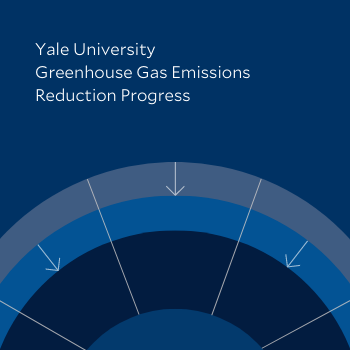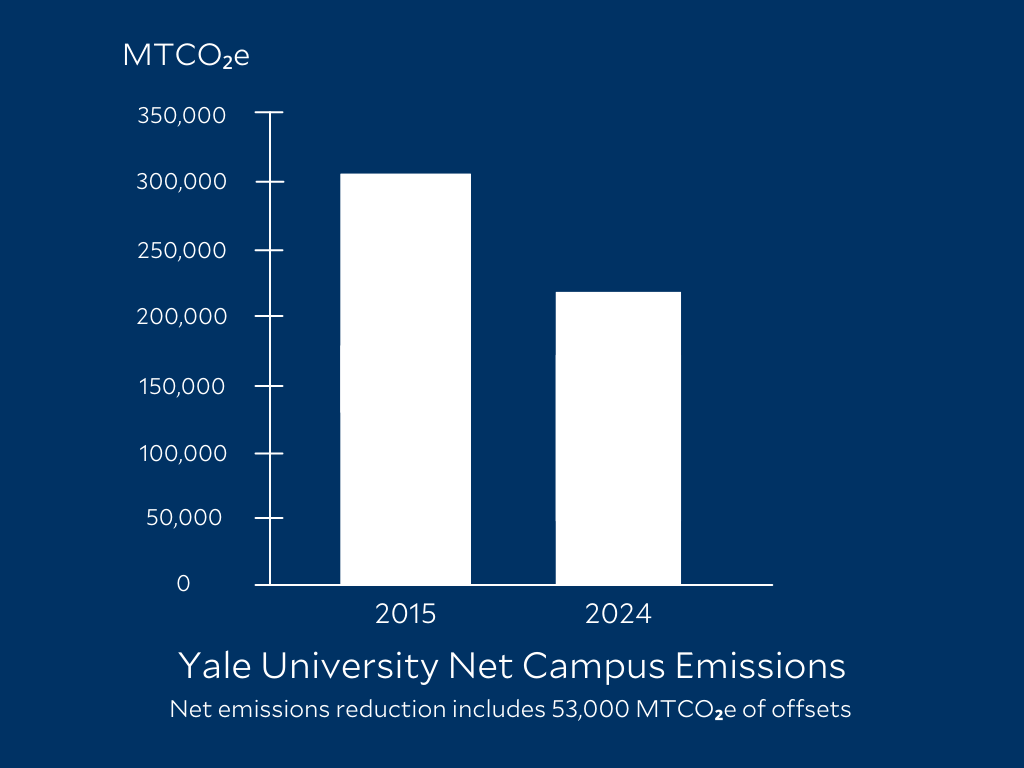
As of fiscal year 2024, Yale has reduced net emissions by 28% since 2015, despite a 14% increase in campus size.
In 2020, Yale achieved its original greenhouse gas emissions goal of a 43% reduction below 2005 levels. This goal was set in alignment with the Kyoto Protocol, which prescribed a reduction of 10% below 1990 levels by 2020.
Yale is now committed to achieving zero actual carbon emissions by 2050 with an interim goal to reach net zero emissions by 2035. Our current goal boundary includes all scope 1 and 2 emissions, aligns with Climate Registry reporting, and uses a 2015 baseline. Reporting to The Climate Registry ensures comprehensive, transparent, and rigorous accounting, and requires verification by a third party.
A Global Imperative

How was this 28% reduction achieved?
In 2024, Yale continued and expanded its wide-scale building energy monitoring system at the device level, using Automated Fault Detection and Diagnostics (AFDD). In the past year, this comprehensive process enabled our in-house staff to help identify efficiency and operational issues with building ventilation systems; make repairs in a timely manner; and ultimately save energy and avoid GHG emissions. In 2024, we prevented an additional 18,000 MMBTU of energy from being wasted.
Moving forward, we have expanded our Automated Fault Detection and Diagnostics (AFDD) monitoring system to include West Campus, and have seen increases in efficiency in the second half of fiscal year 2024.
Learn more about carbon offsets and Yale’s approach to them.
How can you help?
Read about our emissions reduction progress over the years
Greenhouse gas reduction strategy — 2006
Greenhouse gas reduction strategy — 2007
Greenhouse gas reduction strategy — 2008
Greenhouse gas reduction strategy — 2009
Greenhouse gas reduction strategy — 2010
Greenhouse gas reduction strategy — 2011
Greenhouse gas reduction strategy — 2012
Greenhouse gas reduction strategy — 2013
Greenhouse gas emissions reduction progress — 2014
Greenhouse gas emissions reduction progress — 2015
Greenhouse gas emissions reduction progress — 2016
Greenhouse gas emissions reduction progress — 2017
Greenhouse gas emissions reduction progress — 2018
Greenhouse gas emissions reduction progress — 2019
Greenhouse gas emissions reduction progress — 2020
Greenhouse gas emissions reduction progress — 2021